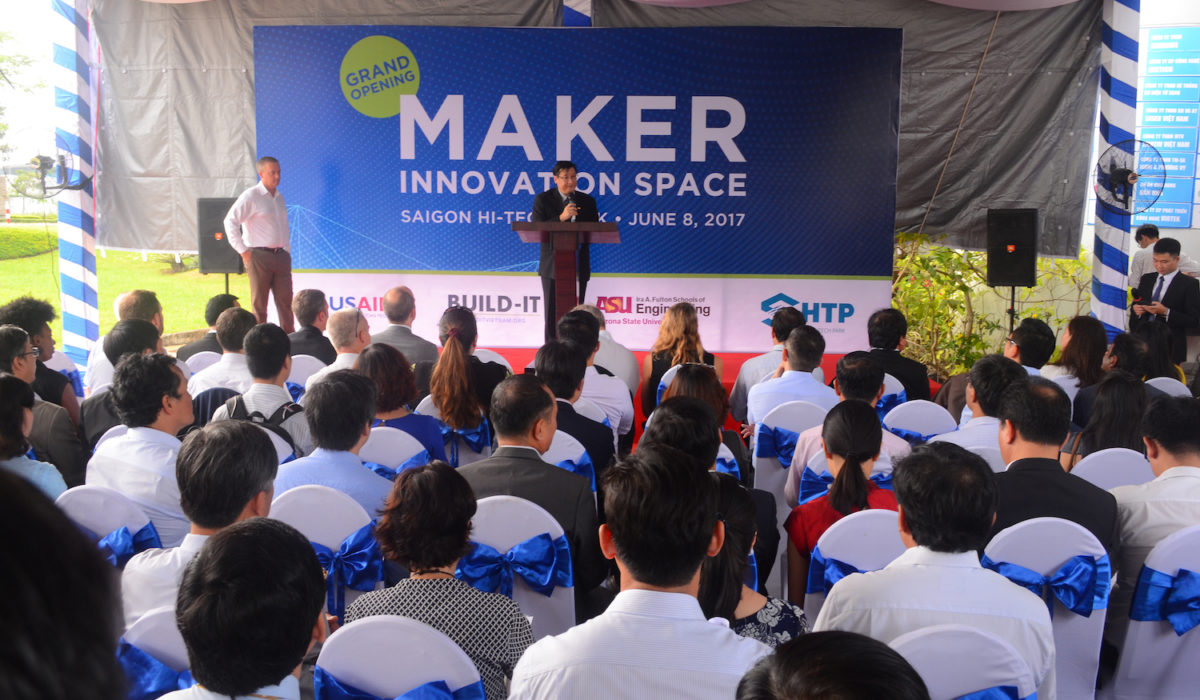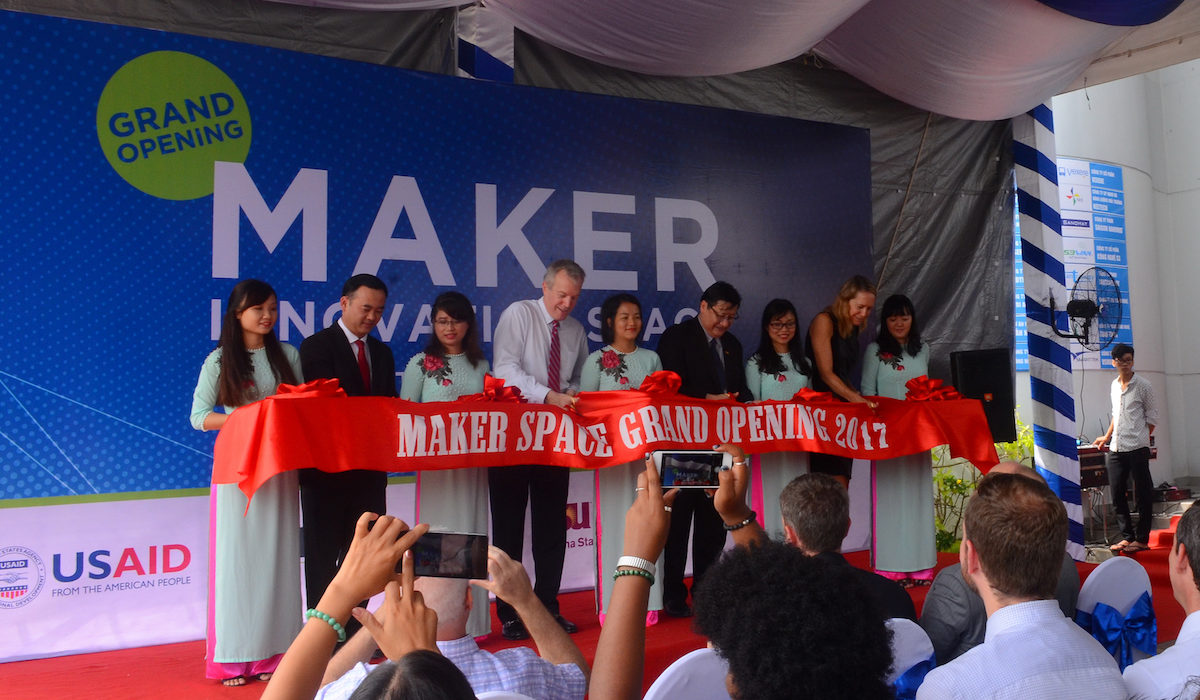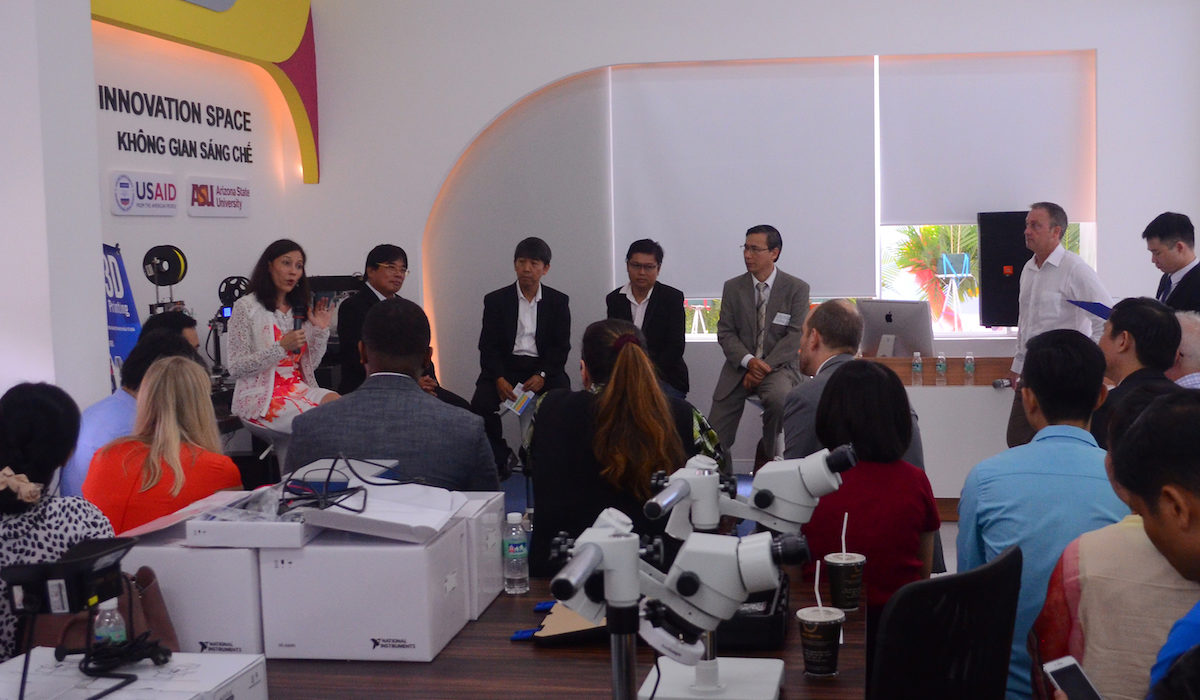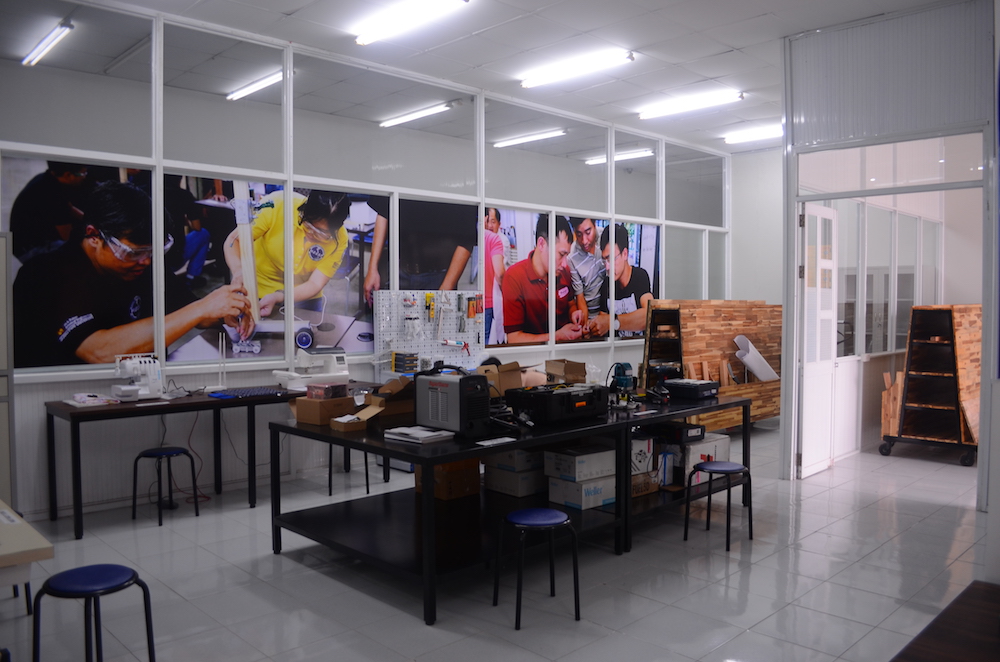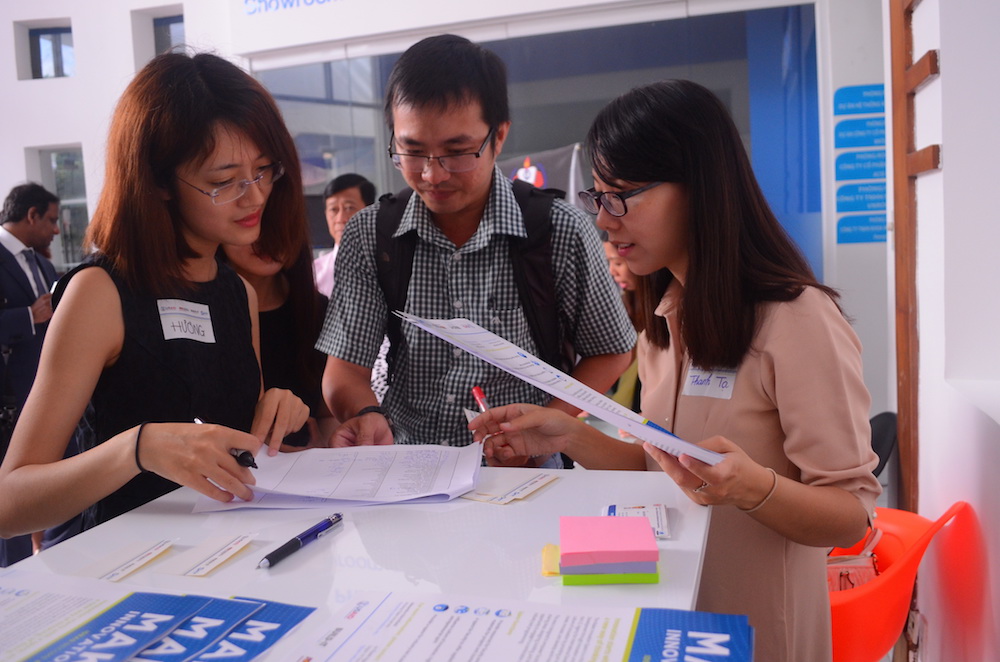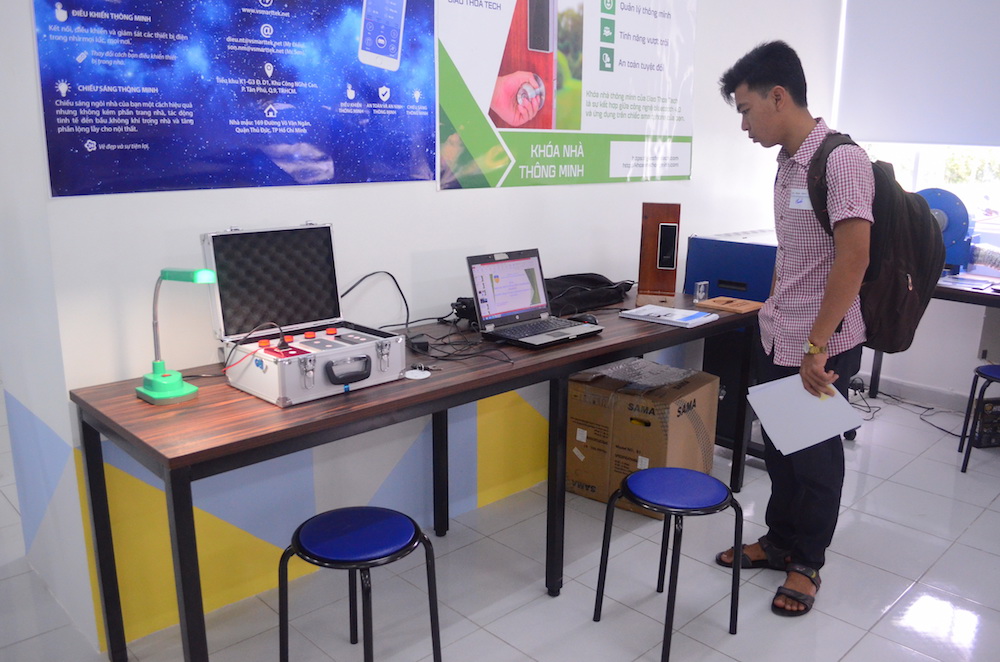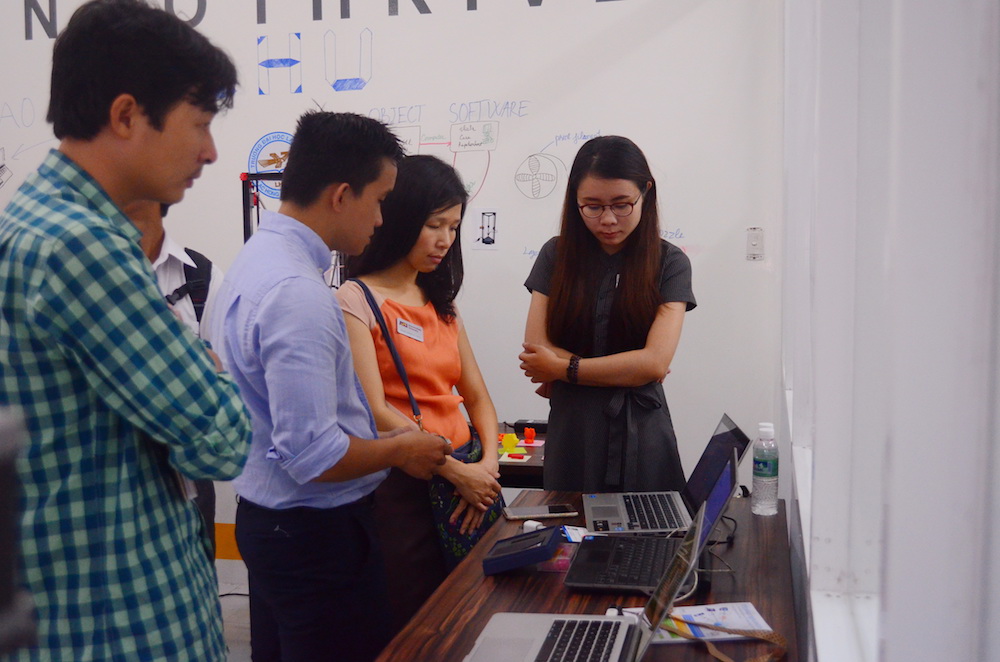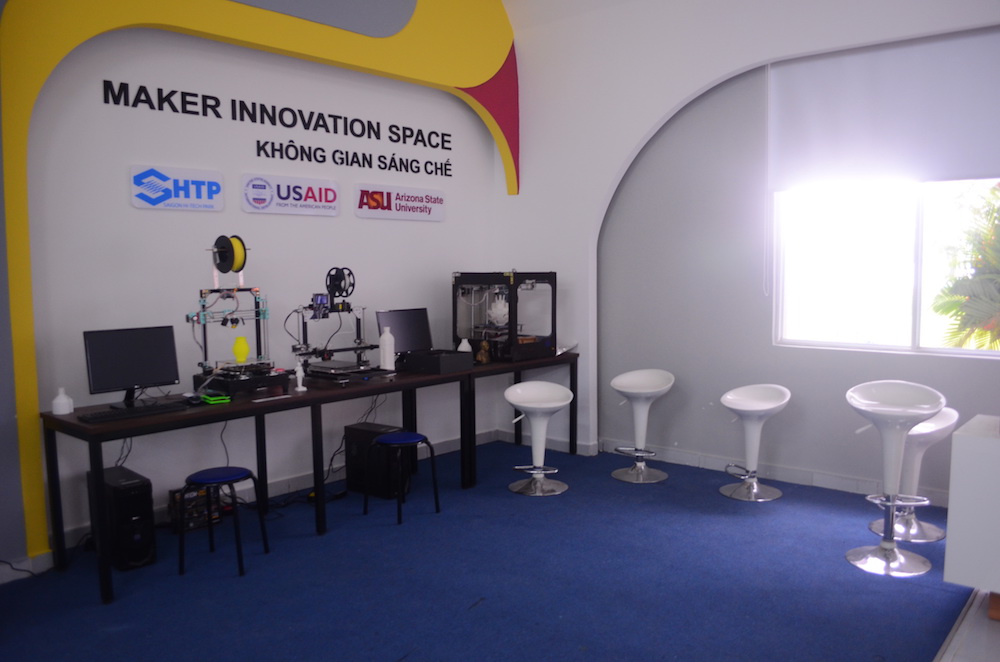
BUILD-IT constructs makerspace to drive innovation, creativity in Vietnam
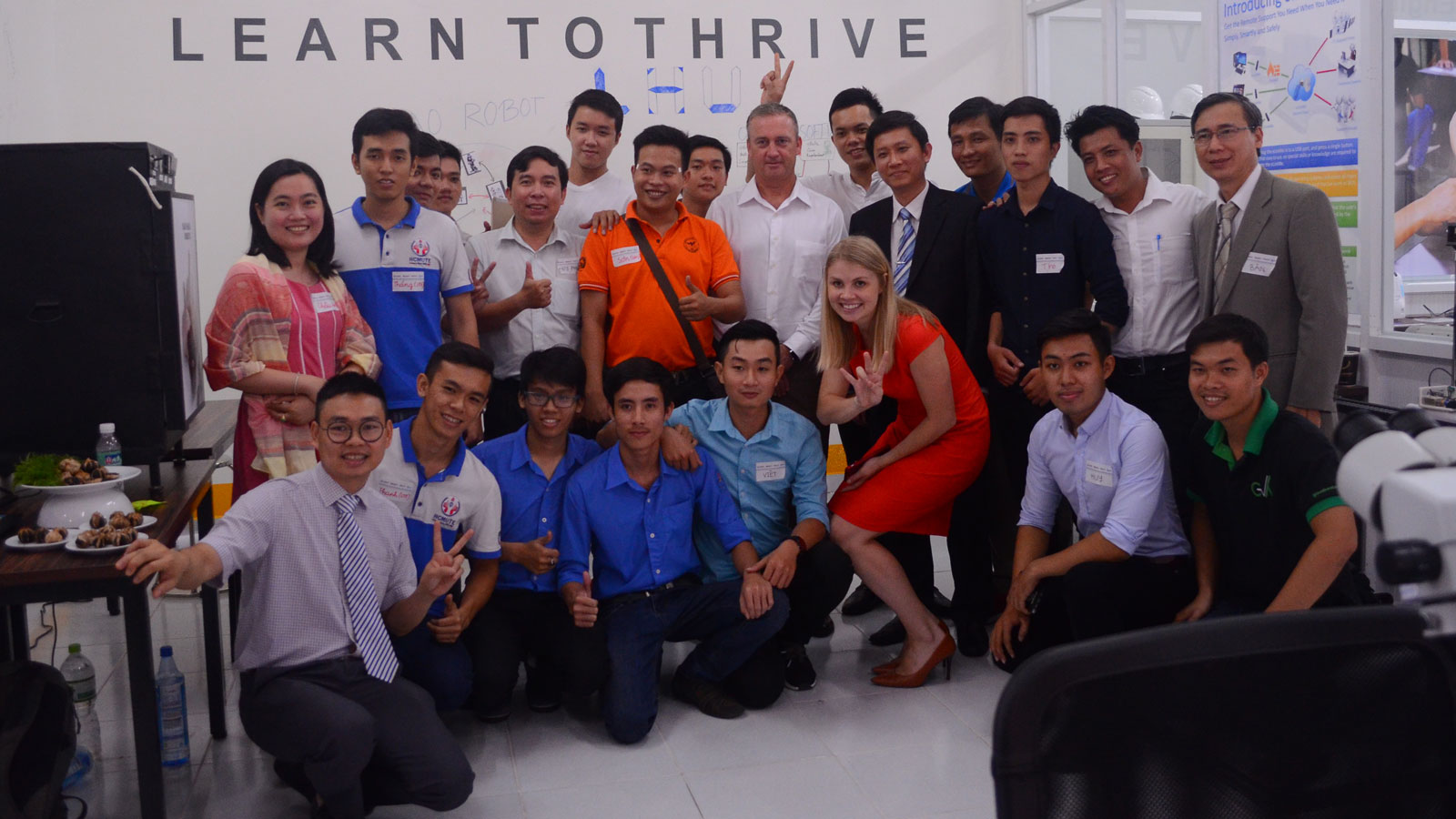
Above: Arizona State University helped launch the Maker Innovation Space in Ho Chi Minh City, Vietnam, as part of the Building University-Industry Learning and Develop through Innovation and Technology program known as BUILD-IT, which brings academia, industry and government together to invest in a dynamic ecosystem for STEM innovation in Vietnam. Photographer: Quynh Giao
Arizona State University continues to foster Vietnamese STEM innovation and skill-building with the opening of the Maker Innovation Space in Ho Chi Minh City’s Saigon Hi-Tech Park.
Launched on June 8, the Maker Innovation Space is part of the Building University-Industry Learning and Develop through Innovation and Technology program known as BUILD-IT. This $10.8 million project, funded by the United States Agency for International Development, brings academia, industry and government together to invest in a dynamic ecosystem for STEM innovation in Ho Chi Minh City, Vietnam.
The opening of the Maker Innovation space is an important part of the program to help improve applied curricula and advance innovation and entrepreneurship in Ho Chi Minh City.
“Today, on behalf of the management board of Saigon Hi-Tech Park, I would like to express my happiness and appreciation to USAID, BUILD-IT and Arizona State University, who chose SHTP as one of two sites in Vietnam to build the Maker Innovation Space,” says Le Hoai Quoc, president of Saigon Hi-Tech Park. “This takes a very important part to boost the making and innovation activities of students as well as startup projects. Being prepared with the equipment in the Maker Innovation Space, in a short period of time, young people can design, innovate and make their innovative ideas [into] real products.”
The space provides resources for faculty and students in the many universities near Saigon Hi-Tech Park to access machinery and materials for projects, courses, workshops, entrepreneurial development and industry-led student competitions.
“The Maker Innovation Space will be a place for university students to design, create, prototype, and invent products and services through a variety of entrepreneurial and curricular platforms being introduced through the BUILD IT Alliance,” says Jeffrey Goss, associate vice provost for Southeast Asia Programs at ASU and executive director of Global Outreach and Extended Education. “We will partner with industry, local community based organizations, and university partners to launch service oriented programs, such as Engineering Programs in Community Service (EPICS), industry-sponsored eProjects, hackathons, design thinking competitions, and senior design capstone projects.“
These tools and programs will better prepare Vietnamese graduates to meet the needs and capabilities of industry.
Above: The Maker Innovation Space in Ho Chi Minh City’s Saigon Hi-Tech Park includes spaces for the design and creation of electronics, automation and textiles, as well as 3D printing tools, a metal shop, a welding shop and a wood shop. Photographer: Quynh Giao
At the launch, U.S. Ambassador to Vietnam Ted Osius said innovation is key to continuing Vietnam’s growing economy.
“The United States promotes innovation through a partnership between academia, the private sector and the government,” Osius says. “Linkages between these three partners form an environment that allows creativity and innovation to take root, and ultimately to power the economy. This system has helped to make America the world’s innovation leader. I see the beginning of that here in Vietnam.”
ASU has been an active part of recent STEM innovation initiatives in Vietnam, including the 2017 STEM Conference hosted by Arizona State University’s Higher Engineering Education Alliance Program and BUILD-IT, the Women in STEM Leadership Program, the Vietnam Engineering Education Conference, and the university invited Vietnamese faculty to campus to learn more about the emerging field of Internet of Things with Intel.































